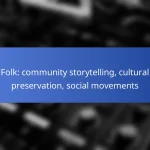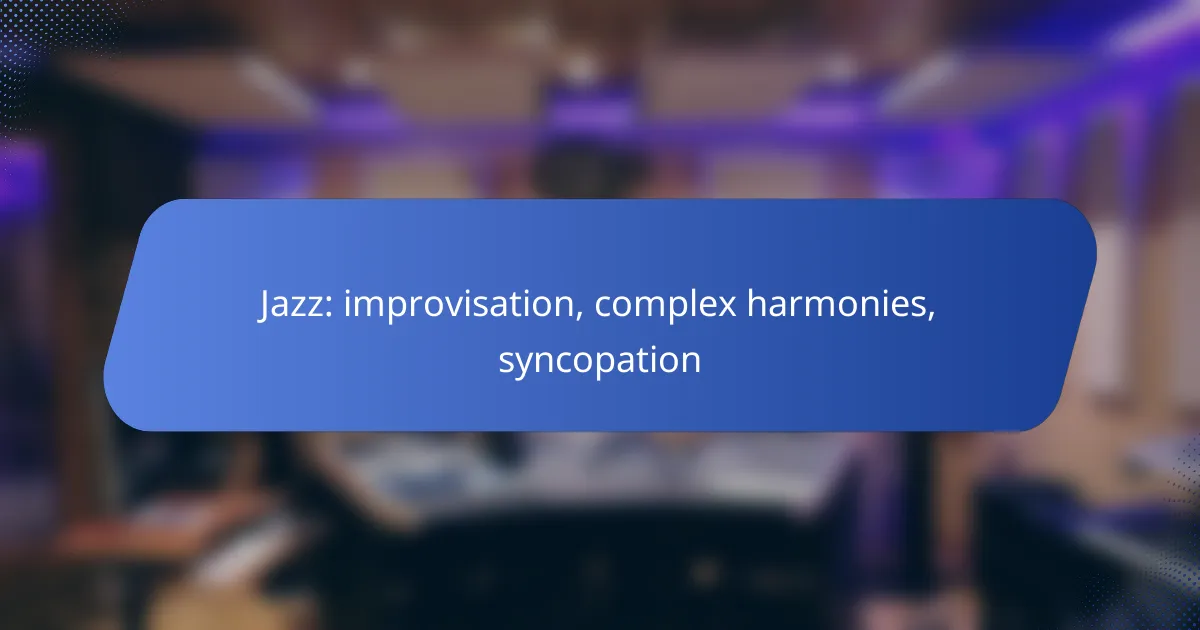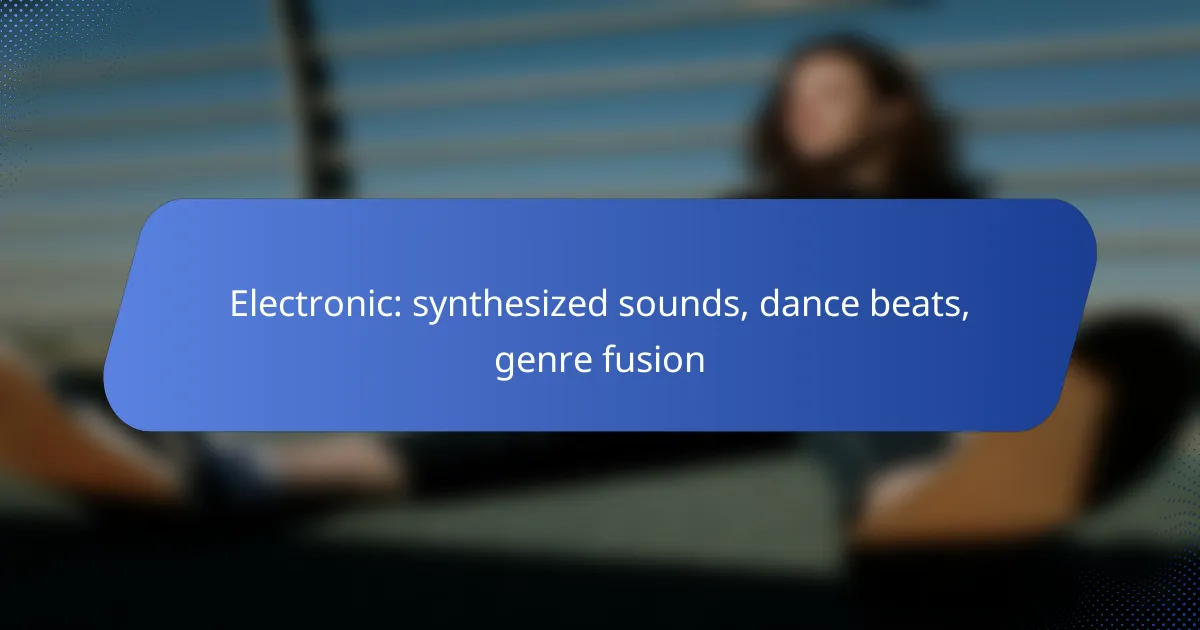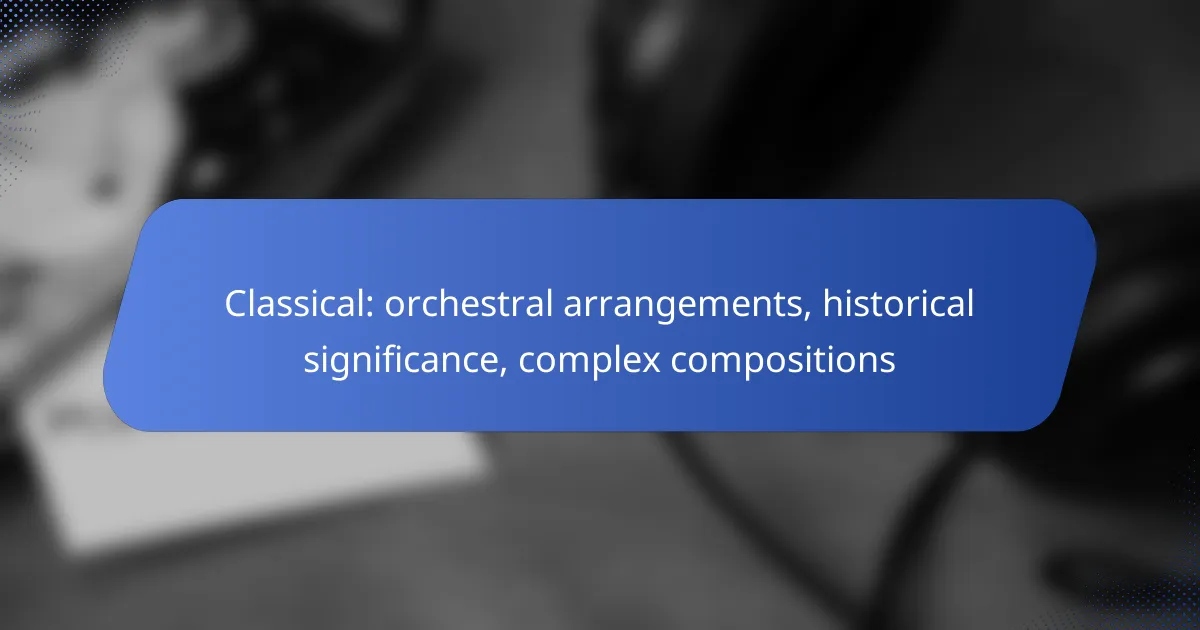Jazz is a dynamic musical genre that thrives on improvisation, allowing musicians to spontaneously create intricate melodies and harmonies in real-time. Characterized by complex harmonies, including extended and altered chords, jazz invites a rich emotional expression, while syncopation introduces unexpected rhythmic elements that enhance its energy and excitement.

How does jazz improvisation work?
Jazz improvisation involves spontaneously creating music in real-time, often characterized by complex harmonies and syncopated rhythms. Musicians draw on their knowledge of scales, modes, and their interactions with fellow players to craft unique melodies and harmonies during performances.
Spontaneous creation of melodies
In jazz, spontaneous melody creation is a fundamental aspect of improvisation. Musicians often rely on their intuition and emotional expression, allowing them to develop new melodic lines on the spot. This process can involve varying existing themes or motifs, creating a fresh interpretation each time.
For instance, a saxophonist might take a simple chord progression and weave intricate melodies around it, using their creativity to explore different musical ideas. This unpredictability is what makes live jazz performances exciting and engaging.
Use of scales and modes
Jazz musicians utilize various scales and modes to enrich their improvisation. Commonly used scales include the major, minor, and blues scales, while modes such as Dorian and Mixolydian provide different tonal colors. Understanding these scales allows musicians to navigate complex harmonies effectively.
A practical approach is to practice improvising over common chord progressions, like the ii-V-I progression, using different scales. This helps musicians develop a repertoire of melodic ideas that can be drawn upon during performances.
Interaction with other musicians
Interaction among musicians is crucial in jazz improvisation, as it fosters a dynamic musical conversation. Players listen closely to each other, responding to musical cues and adjusting their playing in real-time. This collaborative spirit enhances the improvisational experience, creating a cohesive sound.
For example, a pianist might play a rhythmic pattern while a trumpet player improvises a melody over it. This interplay not only enriches the performance but also encourages each musician to push their creative boundaries, leading to innovative musical outcomes.
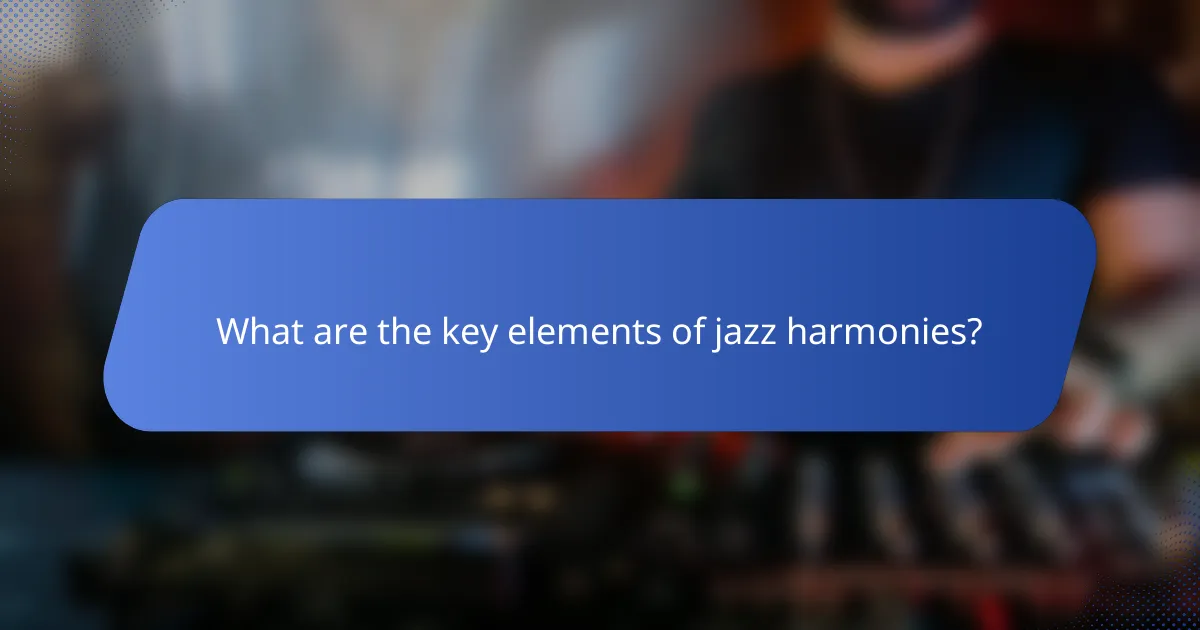
What are the key elements of jazz harmonies?
The key elements of jazz harmonies include extended chords, alterations, and the use of seventh chords, which create rich and complex sounds. These elements allow musicians to explore a wide range of emotional expressions and improvisational opportunities within their performances.
Extended chords and alterations
Extended chords, which include additional notes beyond the basic triad, are fundamental in jazz harmonies. Common extensions are the ninth, eleventh, and thirteenth notes, which add depth and color to the harmony. Alterations, such as sharp or flat ninths, can create tension and resolve in a progression, enhancing the improvisational aspect of jazz.
For example, a C7 chord can be altered to include a C79 or C79, providing distinct flavors that can shift the mood of a piece. Musicians often experiment with these alterations to maintain listener interest and create unique soundscapes.
Use of seventh chords
Seventh chords are a staple in jazz harmonies, providing a more complex sound than simple triads. These chords consist of a root, third, fifth, and seventh note, and can be major, minor, dominant, or diminished. The inclusion of the seventh note adds a layer of richness that is essential for jazz’s expressive quality.
Jazz musicians frequently use dominant seventh chords to create tension that resolves to tonic chords, making them crucial for improvisation. For instance, a progression from G7 to Cmaj7 is a common resolution that showcases the interplay of tension and release in jazz music.
Modal interchange
Modal interchange involves borrowing chords from parallel modes to enrich harmonic progressions. This technique allows musicians to introduce unexpected colors and emotions into their compositions. For example, a piece in C major might borrow chords from C minor, creating a contrast that can evoke different feelings.
Practically, musicians can apply modal interchange by substituting chords like the iv chord from the minor scale for the IV chord in the major scale. This approach can create a fresh sound and inspire new improvisational ideas, making it a valuable tool for jazz musicians looking to expand their harmonic vocabulary.

How is syncopation used in jazz?
Syncopation in jazz involves placing emphasis on unexpected beats or off-beats, creating a sense of surprise and rhythmic complexity. This technique is essential for adding energy and excitement to jazz music, as it breaks the regular flow of rhythm.
Off-beat accents
Off-beat accents in jazz highlight notes that fall between the main beats, creating a dynamic and engaging sound. Musicians often emphasize the second and fourth beats in a 4/4 measure, but they can also accentuate other beats for varied effects. For example, a drummer might hit the snare drum on the “and” of a beat, adding a unique texture to the rhythm.
Rhythmic displacement
Rhythmic displacement involves shifting a phrase or motif to start on a different beat than expected, which creates a fresh perspective on familiar patterns. This technique can be used to surprise listeners and keep the music feeling spontaneous. For instance, a soloist might begin a phrase on the third beat instead of the first, altering the listener’s perception of the rhythm.
Interaction with swing feel
Syncopation interacts closely with the swing feel, a defining characteristic of jazz that emphasizes a relaxed, uneven rhythm. In swing, the first note of a pair is typically longer, while the second is shorter, allowing syncopated accents to stand out even more. Musicians often combine syncopation with swing to enhance the groove, making it essential for creating that quintessential jazz sound.

What are the best jazz improvisation techniques?
The best jazz improvisation techniques include call and response, motivic development, and phrase extension. These methods enhance creativity and expression in performance, allowing musicians to interact dynamically and build on musical ideas.
Call and response
Call and response is a foundational technique in jazz where one musician plays a phrase (the call), and another responds with a complementary phrase. This interaction creates a conversational feel, encouraging spontaneity and collaboration among performers.
To effectively use call and response, listen closely to your partner’s phrases and aim to echo or contrast their ideas. This technique can be applied in various contexts, from solos to ensemble settings, enhancing the overall musical dialogue.
Motivic development
Motivic development involves taking a small musical idea or motif and expanding it throughout a performance. This technique allows musicians to explore variations and build complexity while maintaining a cohesive sound.
When practicing motivic development, start with a simple motif and experiment with changes in rhythm, harmony, or dynamics. This approach can lead to innovative improvisations that keep the audience engaged and showcase your creativity.
Phrase extension
Phrase extension is the technique of lengthening musical phrases to create tension and interest. By adding extra notes or altering the rhythm, musicians can surprise listeners and enhance the emotional impact of their performance.
To master phrase extension, try extending a typical four-bar phrase to six or eight bars. This can involve repeating a section or introducing new melodic ideas, allowing for greater expression and a more dynamic improvisational flow.

How do jazz musicians develop their skills?
Jazz musicians develop their skills through a combination of regular practice, active listening, and participation in collaborative environments like jam sessions. These methods help them master improvisation, complex harmonies, and syncopation, which are essential elements of jazz music.
Regular practice routines
Consistent practice is crucial for jazz musicians to refine their technical abilities and deepen their understanding of musical concepts. A typical routine might include scales, arpeggios, and exercises focused on improvisation techniques, often dedicating at least 30 minutes to an hour daily.
Musicians can benefit from setting specific goals, such as mastering a particular piece or improving their sight-reading skills. Incorporating varied exercises can keep practice sessions engaging and productive.
Listening to recordings
Listening to recordings of jazz legends and contemporary artists is vital for developing a musician’s ear and understanding different styles. By analyzing recordings, musicians can learn about phrasing, dynamics, and the use of complex harmonies in improvisation.
It’s beneficial to create a diverse playlist that includes various sub-genres of jazz, such as bebop, swing, and fusion. Musicians should actively engage with the music by transcribing solos and experimenting with similar techniques in their own playing.
Participating in jam sessions
Jam sessions provide an invaluable opportunity for jazz musicians to apply their skills in a live setting. These informal gatherings encourage improvisation and collaboration, allowing musicians to experiment with new ideas and receive immediate feedback from peers.
To make the most of jam sessions, musicians should come prepared with a few standard tunes and be open to playing with different musicians. This experience not only enhances their adaptability but also fosters a sense of community within the jazz scene.

What are the influences of Australian jazz?
Australian jazz is shaped by a blend of local traditions and global influences, resulting in a unique sound that reflects the country’s diverse culture. Key influences include indigenous music, classical elements, and contemporary jazz styles from around the world.
Integration of local styles
The integration of local styles in Australian jazz involves incorporating indigenous music elements and regional genres. Musicians often draw inspiration from traditional Aboriginal music, using instruments like the didgeridoo alongside standard jazz instruments to create a distinctive sound.
Additionally, Australian jazz musicians may blend influences from folk and rock music, reflecting the country’s musical landscape. This fusion allows for innovative improvisation and complex harmonies that resonate with local audiences.
Collaboration with international artists
Collaboration with international artists is a significant aspect of Australian jazz, enhancing its richness and diversity. Many Australian jazz musicians have worked with renowned artists from the United States, Europe, and Asia, bringing new perspectives and techniques to their craft.
These collaborations often lead to unique performances and recordings, showcasing a blend of styles and improvisational techniques. Festivals and events frequently feature international artists, fostering a vibrant exchange of ideas and expanding the reach of Australian jazz on the global stage.




